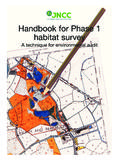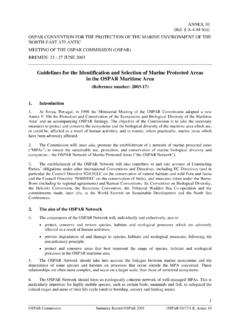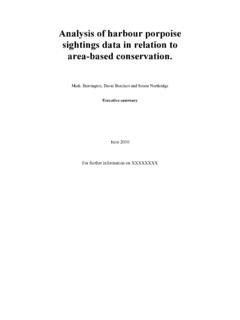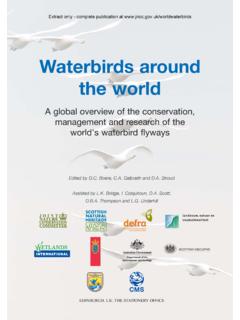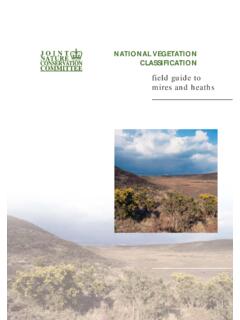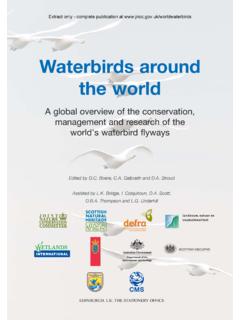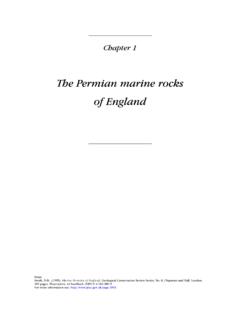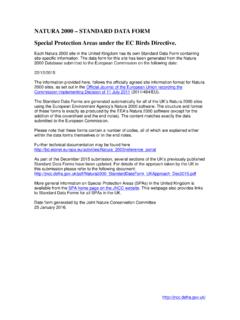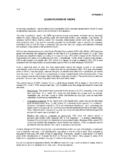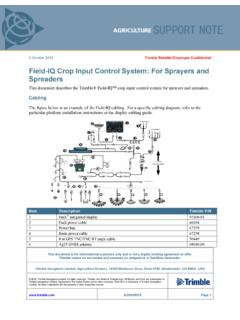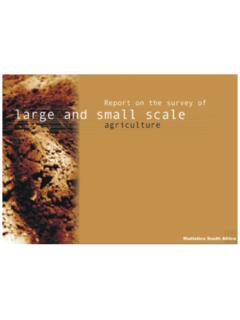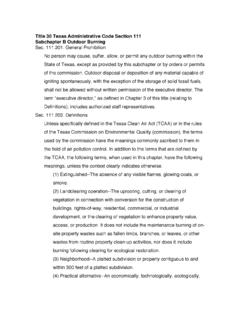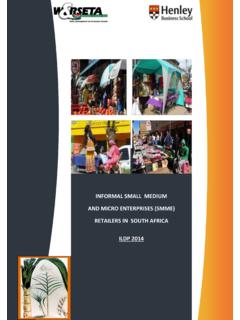Transcription of UK BAP Priority Habitat Descriptions
1 UK Biodiversity Action Plan Priority Habitat Descriptions UK Biodiversity Action Plan; Priority Habitat Descriptions . BRIG (ed. Ant Maddock) 2008. (Updated Dec 2011) For more information about the UK Biodiversity Action Plan (UK BAP) visit i Contents UK BIODIVERSITY ACTION PLAN: Priority Habitat Descriptions INTRODUCTION 1 Habitat Descriptions 2 Aquifer Fed Naturally Fluctuating Water Bodies 2 Arable Field Margins 3 Blanket Bog 4 Blue Mussel Beds on Sediment 6 Calaminarian Grasslands 8 Carbonate Mounds 9 Coastal and Floodplain Grazing Marsh 10 Coastal Saltmarsh 10 Coastal Sand Dunes 12 Coastal Vegetated Shingle 13 Cold-water Coral Reefs 14 Deep-sea Sponge Communities 16 Estuarine Rocky Habitats 18 Eutrophic Standing Waters 21 File Shell Beds 22 Fragile Sponge and Anthozoan Communities on Subtidal Rocky Habitats 23 Hedgerows 25 Horse Mussel Beds 25 Inland Rock Outcrop and Scree Habitats 27 Intertidal Underboulder Communities 28 Intertidal Chalk 30
2 Intertidal Mudflats 31 Limestone Pavements 33 Lowland Beech and Yew Woodland 33 Lowland Calcareous Grassland 34 Lowland Dry Acid Grassland 34 Lowland Fens 36 Lowland Heathland 36 Lowland Meadows 37 Lowland Mixed Deciduous Woodland 38 Lowland Raised Bog 39 Machair 40 Maerl Beds 41 Maritime Cliff and Slopes 42 Mesotrophic Lakes 44 Mountain Heaths and Willow Scrub 45 Mud Habitats in Deep Water 46 Native Pine Woodlands 47 Oligotrophic and Dystrophic Lakes 48ii Open Mosaic Habitats on Previously Developed Land 49 Peat and Clay Exposures with Piddocks 57 Ponds 59 Purple Moor Grass and Rush Pastures 60 Reedbeds 61 Rivers 61 Sabellaria Alveolata Reefs 70 Sabellaria Spinulosa Reefs 71 Saline Lagoons 73 Seagrass Beds 74 Seamount Communities 75 Serpulid Reefs 76 Sheltered Muddy Gravels 78 Subtidal Chalk 79 Subtidal Sands and Gravels 81 Tide-swept Channels 83 Traditional Orchards 85 Upland Birchwoods 87 Upland Calcareous Grassland 88 Upland Flushes, Fens and Swamps 89 Upland Hay Meadows 90 Upland Heathland 91 Upland Mixed Ashwoods 92 Upland Oakwood 93 Wet Woodland 94 Wood-Pasture and Parkland 95 REFERENCES 99 Introduction After two years of work involving in excess of 500 people, the proposed UK List of Priority Species and Habitats was presented in a UK BAP website report in June 2007.
3 Following recommendation from the Priorities Species and Habitats Review Working Group and the Priorities Review Group, the Governments of all four UK administrations adopted the recommendations of experts and published the UK list of Priority Species and Habitats in August 2007. This list contains 1149 species and 65 habitats that have been listed as priorities for conservation action under the UK Biodiversity Action Plan (UK BAP). This was the first full review of the UK BAP Priority list and provided an opportunity to take account of emerging and continued priorities for action, conservation successes, and new information gathered since the original list of UK BAP priorities was established.
4 This document describes each of the 65 UK BAP Priority habitats, which span terrestrial, freshwater and marine environments. It is anticipated that these definitions will be described in more detail in due course, albeit that their overall scope will not be significantly affected by this. Even as this report is being published some of the terrestrial, freshwater and marine Habitat definitions are being refined. For those habitats for which pre-existing Habitat Action Plans are available, as written in 1995 (see ), and where the scope of the Habitat description remains unchanged, a weblink is provided to the relevant action plan; these should be read with consideration that they reflect the original status of the habitats when the plans were first written in 1995.
5 In addition, a summary of each definition, derived from the HAP, is included in this document. For those terrestrial and freshwater habitats which are either new priorities or where changes have been made to the original Habitat scope (as given in the 1995 action plan), the nature of the changes is outlined or the new description is given in full. This information has been taken from Annex 5 of the UK BAP Species and Habitats Review Report which provides the detail and reasoning behind the changes (available at ). The UK BAP Marine Steering Group is still finalising the Descriptions of the newly recognised Priority marine habitats; detail on these will be provided in due course.
6 1 Habitat Descriptions Aquifer Fed Naturally Fluctuating Water Bodies The definition of this Habitat remains unchanged from the pre-existing Habitat Action Plan ( ) a summary of which appears below. Physical and chemical status This Habitat category consists of natural water bodies which have an intrinsic regime of extreme fluctuation in water level, with periods of complete or almost complete drying out as part of the natural cycle. They have no inflow or outflow streams at the surface, except at times of very high water level, when temporary out-flows may develop. Instead, they are directly connected to the underlying groundwater system and periodically empty and are recharged via swallow holes or smaller openings in their beds.
7 There are two known variants of the Habitat in the UK: turloughs, found over Carboniferous limestone in Northern Ireland and Wales, and fluctuating meres, which occur over chalk in the Norfolk Breckland. Turloughs are distinguished by winter flooding and a dry floor, apart from small residual pools, in summer. Under one definition, a water body qualifies as a turlough only if winter flooding exceeds a depth of There may be underground connections between neighbouring turloughs. The fluctuating meres of Norfolk do not have a regular annual rhythm of emptying and recharge. Instead, there is a complex pattern of drying out and refilling, sometimes with a stretch of several years during which a mere may remain dry, followed by a prolonged period when water is constantly present, although its depth may vary from a few centimetres to 6 metres.
8 The water level in both turloughs and meres reflects the height of the water table, which periodically rises above the surface of the bed. The response to groundwater fluctuations in turloughs is rapid, whereas that in the meres is highly lagged, with each mere having an individual periodicity. This is naturally a very rare Habitat , both in the UK and internationally, although the Republic of Ireland has at least 60 unmodified turloughs 10 ha or more in extent. Three intact turloughs have so far been found in Co. Fermanagh, Northern Ireland, possibly the most northerly water bodies of this kind in Europe, and a single example (Pant-y-llyn) has been recognised in South Wales.
9 Six fluctuating meres have been identified in the Norfolk Breckland, but some of the smaller pools nearby may also be fluctuating meres. There have been suggestions that aquifer fed naturally fluctuating water bodies may occur elsewhere in the UK, including Scotland, but none has yet been positively identified. Conversely, there are probably a number of aquifer fed water bodies which were once naturally fluctuating but have been deliberately modified and so have lost most of their biological interest. Taking the area of maximum inundation, the total extent of the nine UK waters at present known to fit the definition of aquifer fed naturally fluctuating water bodies is approximately 10 ha in Northern Ireland, 1 ha in Wales and 20 ha in England.
10 The nutrient status of these lakes varies from area to area and the water quality reflects that of the groundwater. The water of turloughs and fluctuating meres is hard because the underlying rock is calcareous. The Irish and Welsh turloughs lie naturally in the middle of the trophic range for the UK (mesotrophic) and the Breckland meres are somewhat richer (mildly eutrophic). Biological status The concentric zonation of vegetation in these lakes is strikingly obvious, especially when they are in their dry phase. Then their basins are partly or completely occupied by grassland, often with silverweed Potentilla anserina abundant, although turloughs in Northern Ireland retain some permanent swampy pools.


